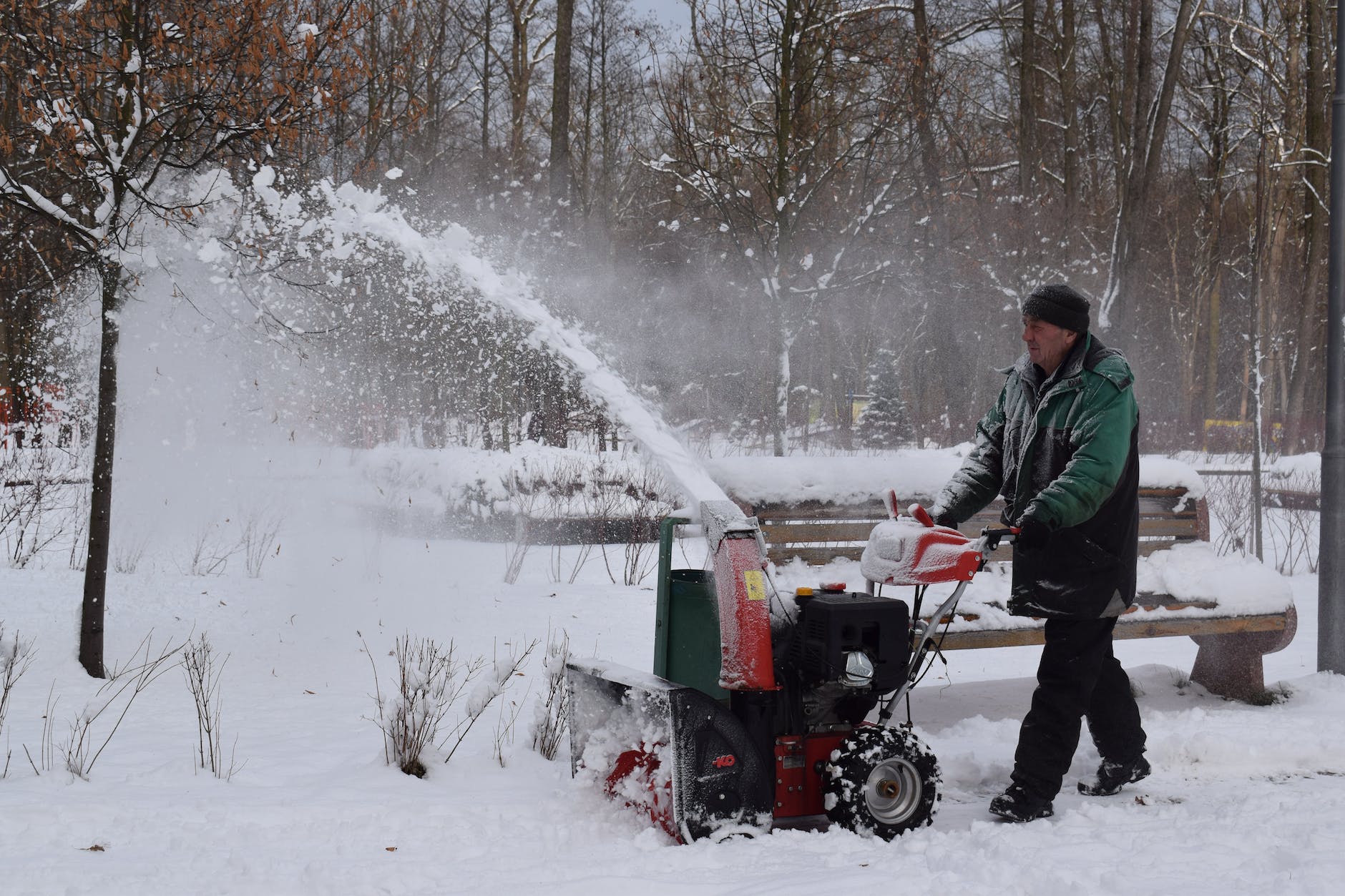As long as snowblowers run in the winter, cables will be freezing. Let’s discuss how to keep snowblower cables from freezing.
Snowblowers blow snow. Snow happens in the winter (usually). It’s cold in the winter. Snow is made of water. Water freezes when it’s cold. Thus, snow will accumulate and freeze on snowblower cables.
Sorry for the pedantic explanation, but I share it because we can interrupt the cycle to prevent the cables from freezing in the first place.
The problem with frozen cables
The problem is that as ice accumulates on the cables, they cease to perform their function. The main culprit is the chute discharge as it will no longer rotate when the chute is frozen to the impeller housing.
Furthermore, the choke and throttle cables can cease working once they’re encased in ice. That can obviously be problematic.
While this post is specifically about walk-behind snowblowers, ice buildup also affects tractor-mounted snowblowers.
I have a front-mount snowblower for our John Deere 2320 tractor. As I’m clearing snow, I have to be diligent in keeping the pto shaft area clear of snow as well.
If I forget to do so, the ice will build up to the point of throwing the chain off the sprocket. Once the chain is off, the snowblower will no longer be driven.
It’s a pain to put back on – especially when it’s entombed in ice. And you don’t have a garage. Maybe I should follow the advice I’m about to present more ardently.
That being said, this article is about ice buildup on snowblower cables, so let’s get back on topic.
How to keep snowblower cables from freezing
Option 1
Only operate your snowblower during the summer.
Option 2
Since the first option doesn’t apply, we need to think rationally. The best way to prevent ice buildup on the snowblower and/or cables is to prevent the snow from sticking in the first place.
To that end, we need to reduce the friction of any sticking points found on the snowblower.
In order to accomplish this, a little maintenance will go a long way.
First, ensure that all metal surfaces are clear of rust and there is no bare metal present. Touch up the paint where it’s been worn. Not only does the paint make it look prettier, but it helps the snow slide instead of stick.
To increase the slipperiness of the snow, we can coat the entire machine with a silicon polymer spray. Sprays like these are hydrophobic, meaning that they repel water.
Because of this neat little trick of science, the snow will naturally slide off of surfaces easier. If it doesn’t stick in the first place, it can’t build up and freeze. Go ahead and spray everywhere the snow contacts – auger, auger housing, impeller, impeller housing, discharge chute, and yes, cables.
Storing your snowblower
If you have the option of storing your snowblower inside a heated garage, not only will it start easier, but you can thaw it out between uses.
I know that sounds simple, and it is, but consider the alternative. If you’re like me, and you don’t have the option of storing it inside, any residual snow that’s left on the machine when you’re done will freeze prior to the next use.
I know you’re tired, hungry, and thirsty after blowing snow for hours. But take a few minutes before heading inside and clean off your machine.
If you don’t, the residual engine heat will melt some of that snow into water which will then freeze once it has cooled off.
Recap
Perform diligent maintenance on your equipment. Add in an extra layer of protection with a silicon spray. Then, make sure to clean your machine if you have to store it outside. These three tips will go a long way to preventing snowblower cables from freezing.
Did I forget anything? Let me know in the comments below!
As an Amazon Associate I earn from qualifying purchases.
